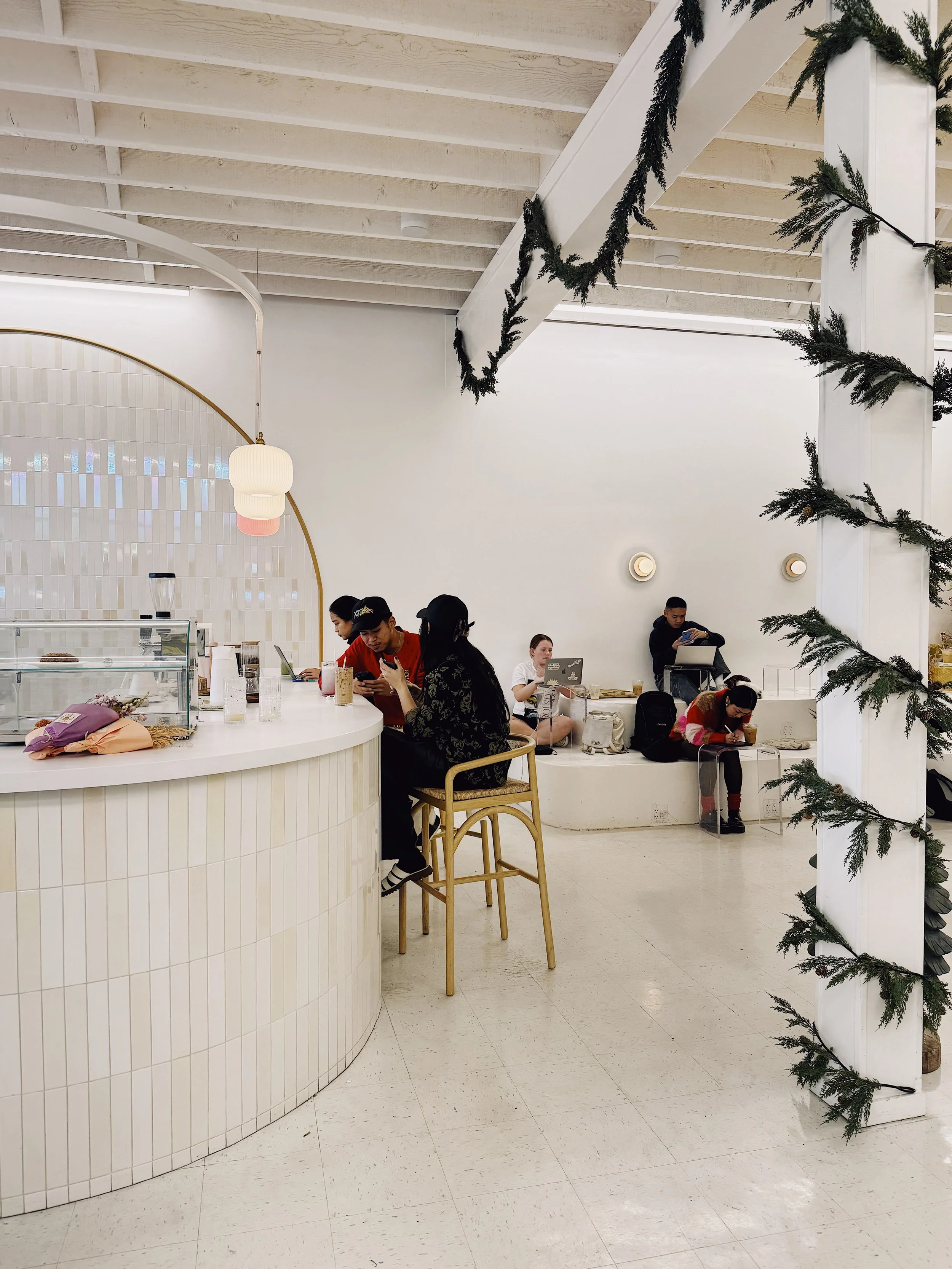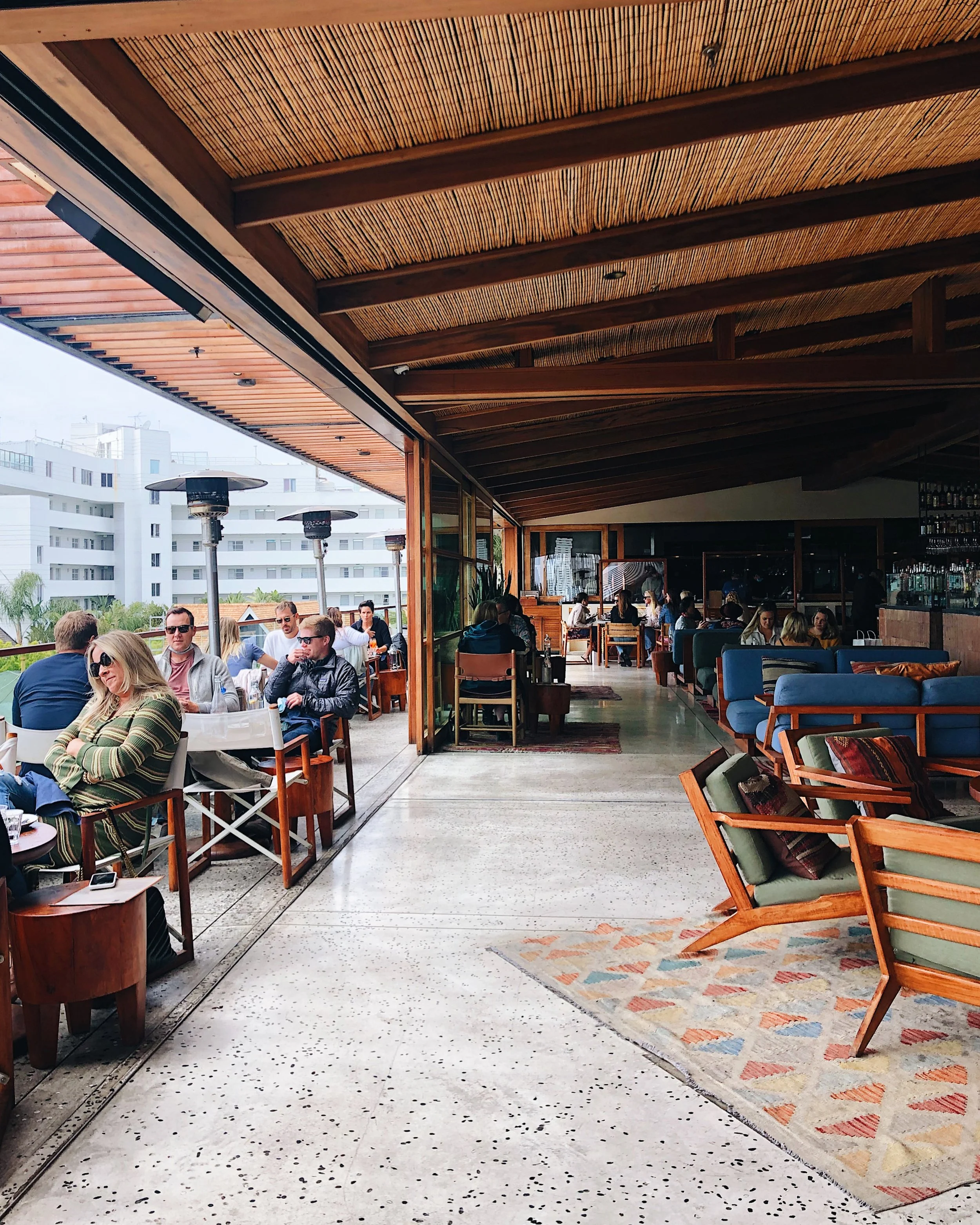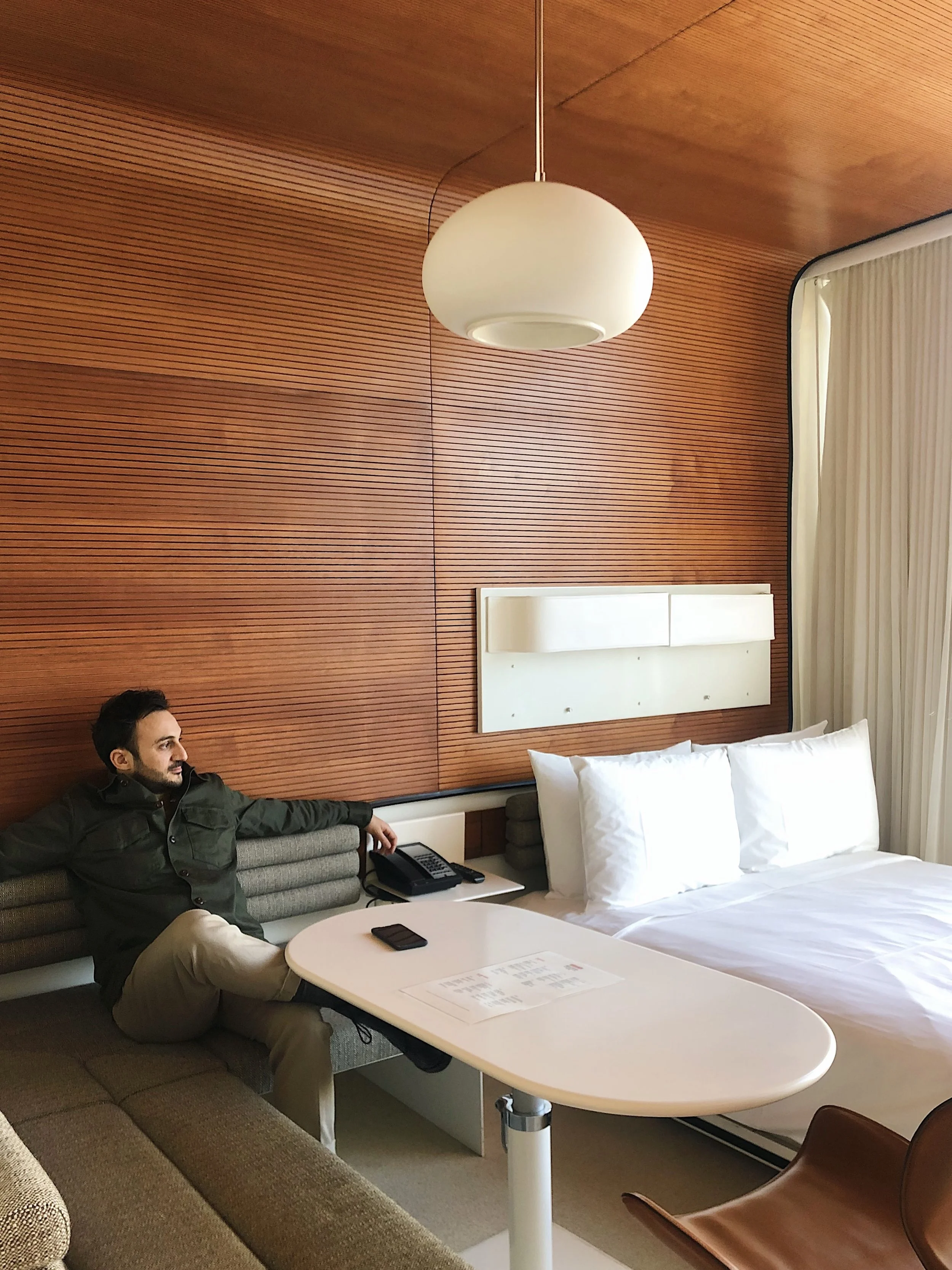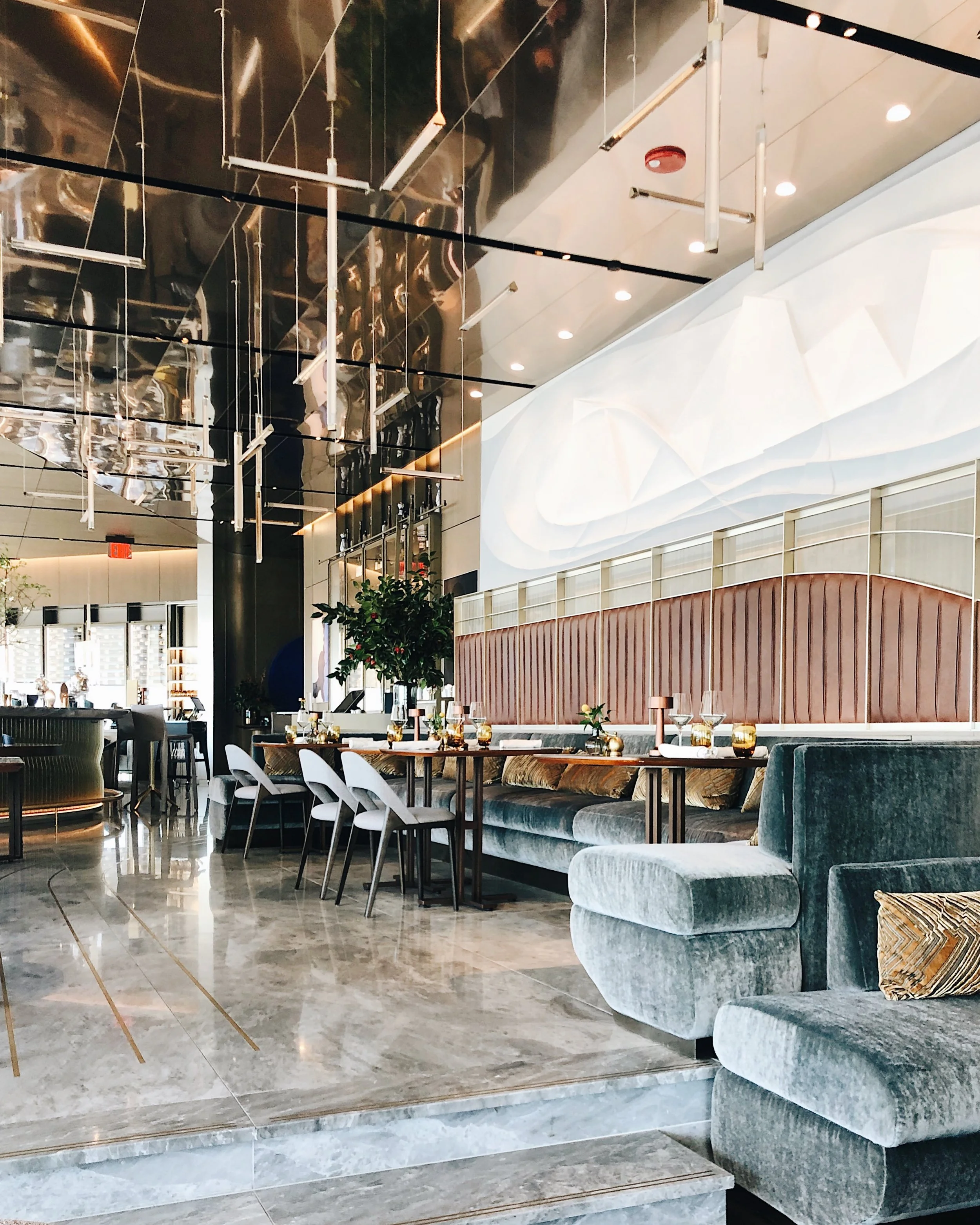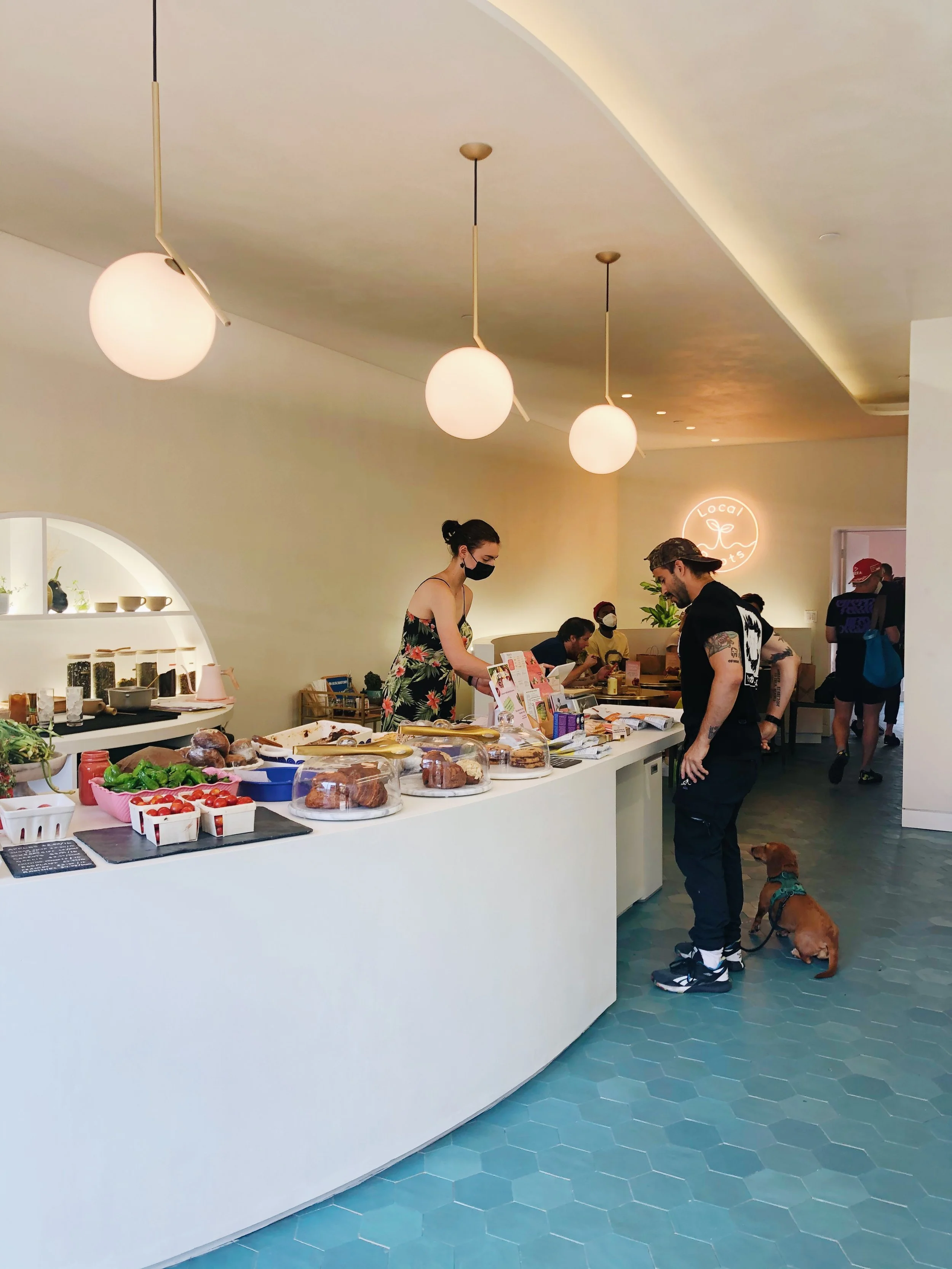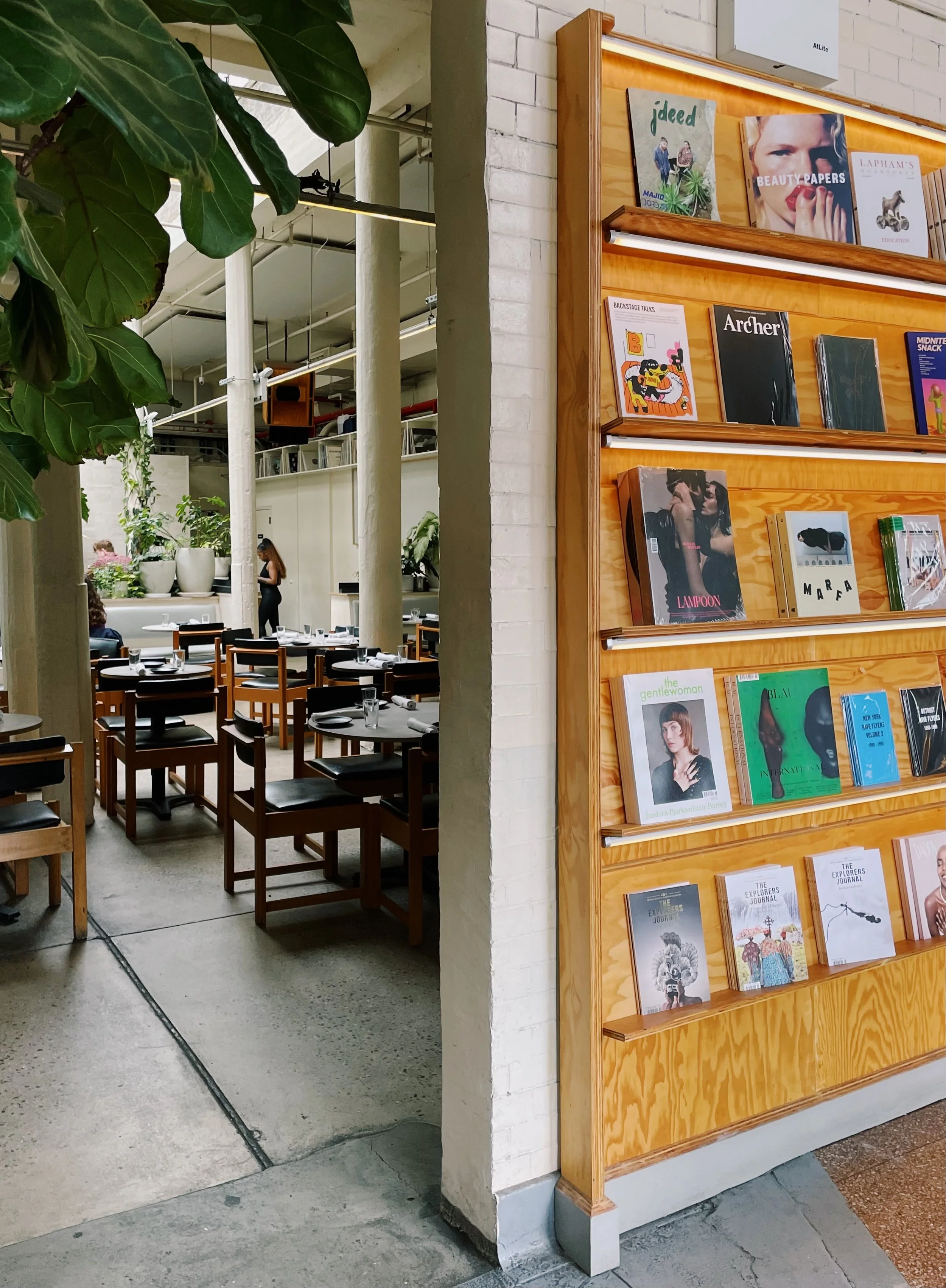How the Aesthetics of a Space Shape Our Emotional Landscape?
Why do certain spaces make us feel immediately at ease, while others leave us unsettled and make us leave right away? As someone used to moving through countless public spaces, from monolithic art spaces, to sterile airport lounges, bucolic country guest houses and irreverent coffee shops, I've become increasingly curious about how intentional design shapes our internal landscape.
This goes further than just preferences or taste, there's something deeper at work in how our environments speak to our nervous systems without our conscious awareness.
Great White, Venice Beach, LA, CA
Elephante, Santa Monica, LA, CA
Design as emotional architecture
We can acknowledge that environments affect our spending behaviors, hence the calculated design of retail spaces. Although it can feel tricky to articulate the way they shape our collective emotional reality.
In hospitality environments specifically, design elements are set to speak directly to our most primitive brain functions: do I feel safe here? Is this a place of nourishment? Can I rest or should I remain vigilant?
For instance, restaurant lighting set at specific warmth and brightness levels have shown to affect not just our mood but our perception of food flavors and even how long we stay. And the height of ceilings can also influence conversation patterns: higher ceilings for abstract, creative discussions, lower for intimate, detailed exchanges. This impacts how sound moves through a space, either by absorbing the noise and creating intimate acoustic "pockets," or by bouncing and amplifying, which requires more effort for basic communication.
Hoxton Hotel, Brooklyn, NY
Ludlow Coffee Supply, NYC
Beyond the visual experience
While much of design discussion centers on what we see, our experience of hospitality engages all senses. The most memorable hotel I've stayed in wasn't visually remarkable, but it had incorporated a subtle signature scent. Not the overwhelming artificial fragrance that assaults in some luxury spaces, but a gentle blend of local herbs that registered just at the edge of awareness.
Similarly, the tactile elements we encounter in public spaces leave impressions beyond our conscious registration. The weight and temperature of a restaurant's flatware, the texture of the hotel bedsheets, or the softness of a seat—these elements communicate intentionality or its absence more powerfully than any mission statement.
So what would our public spaces look like if we designed explicitly for emotional wellbeing rather than visual impression? This question has changed how I evaluate spaces I enter.
A café in my neighborhood recently redesigned, replacing their comfortable furniture with visually cohesive but less comfortable seating. The space photographs beautifully now, with clean lines, and a consistent color palette. But the community that once lingered there has noticeably thinned. Something essential was lost in prioritizing the visual over the experiential.
The Peak, NYC
Local Roots, Brooklyn, NY
Small shifts for a significant impact
Creating environments that support emotional wellbeing doesn't necessarily require complete renovations or massive investment. Some of the most effective hospitality spaces I've encountered made surprisingly subtle choices:
Lovesong Coffee+Market in San Diego, CA placed its waiting area at the center of the location to offer a view of the baristas at work, creating both distraction and connection during what could otherwise be a frustrating wait.
Hotel Sookie in Paris has replaced the standard bright overhead lighting at check-in with table lamps, immediately shifting the interaction from transactional to personal
The Atrium, the Public Records’ restaurant in Brooklyn, NY introduced sound-absorbing panels, enhancing the acoustics of the space and allowing conversation without raising voices.
We could also consider some ethical dimensions in regards to designing public spaces.
When, for instance, economic considerations override human emotional needs and downgrade the experience in favor of practical or pure aesthetic considerations, like uncomfortable seating in airports deliberately designed to prevent rest, the absence of natural elements in budget hotels, or the overwhelming sensory assault of certain retail environments designed to disorient and increase impulse purchases.
We could also not forget that there is always a cultural context to consider when designing for a collective, and that the answers aren't universal. A minimalist aesthetic that signals luxury and peace in certain contexts may trigger feelings of coldness or emotional sterility for others. The layered textiles, scents, and colors that communicate warmth and welcome in one cultural tradition might overwhelm someone raised with different sensory languages.
Going places with awareness
As I continue to explore this territory between design and emotional wellbeing in public spaces, I've developed a practice of noticing how different environments affect not just me but those around me. Why do people tend to elect some places as their go-to favorite versus others? How do people feel chilling in this hotel lobby? What makes a space feel more agreeable and memorable than another? Where do I feel more drawn to meet this person versus another, and why? What places would be my first choices if I needed a break from it all? What places would I deem as safe?
These questions illustrate that this isn’t about creating perfect environments, but about becoming more conscious of how the places we create and consume collectively shape our capacity for rest, connection, and presence with one another. Perhaps the most valuable question isn't "is this design beautiful?" but "how do hospitality players can responsibly contribute to building and shaping a more mindful landscape while maintaining their design and cultural integrity?”

